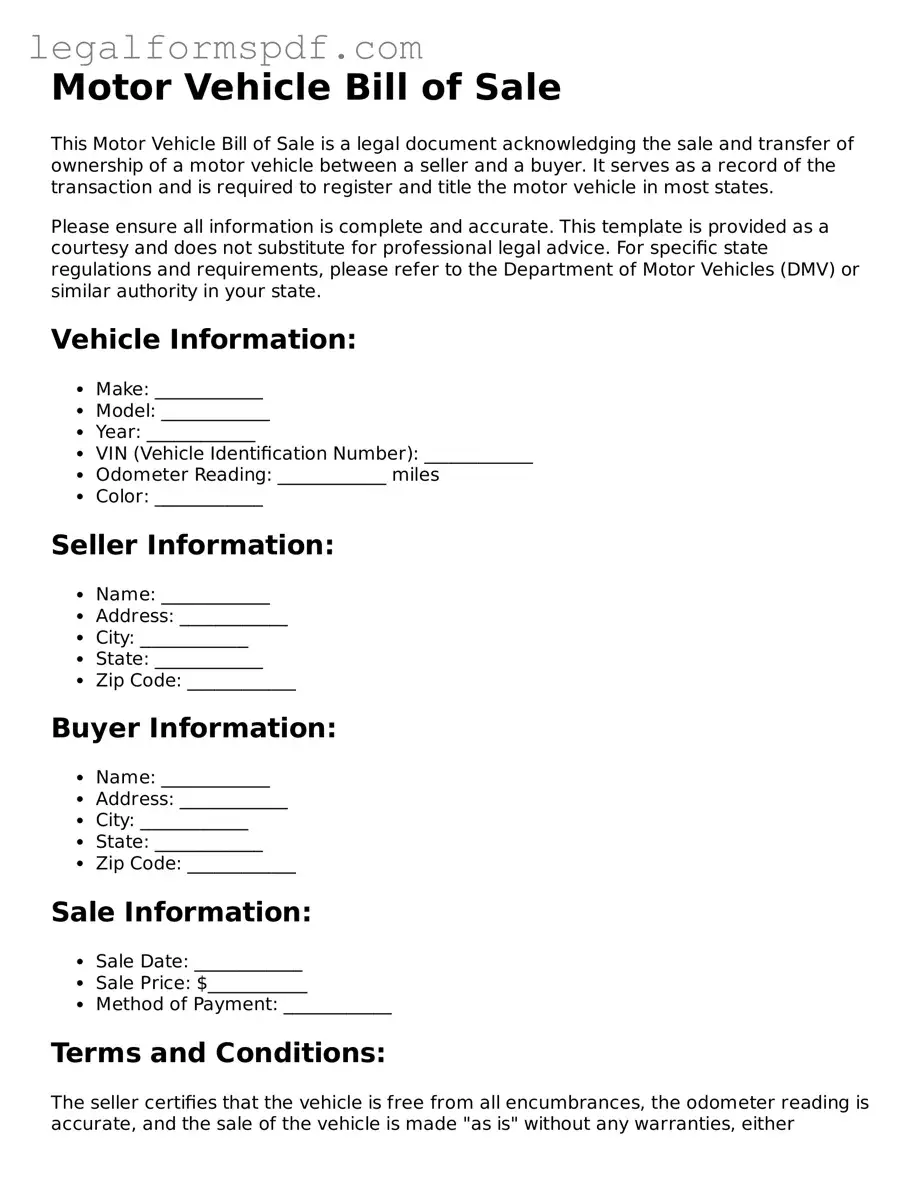What is a Motor Vehicle Bill of Sale?
A Motor Vehicle Bill of Sale is a legal document that records the sale and transfer of ownership of a motor vehicle from a seller to a buyer. It typically includes important details about the transaction such as the make, model, year, and VIN of the vehicle, the sale price, and the names and signatures of the parties involved. This document serves as a proof of purchase and can be vital for registration, taxes, and legal matters.
Is a Motor Vehicle Bill of Sale required in all states?
Not all states require a Motor Vehicle Bill of Sale for the sale of a vehicle. However, even in states where it is not a legal requirement, it is highly recommended to complete one as it provides a written record of the sale. For states that do require one, the document may need to meet specific state requirements to be considered valid. It is important to check with your local Department of Motor Vehicles (DMV) or equivalent agency to understand your state's requirements.
What information should be included in a Motor Vehicle Bill of Sale?
A comprehensive Motor Vehicle Bill of Sale should include the date of sale, the full names and addresses of both the buyer and seller, a detailed description of the vehicle (including make, model, year, and VIN), the sale price, payment details (such as down-payment and installments, if applicable), and any warranties or as-is statements. Moreover, it should include specific terms of the agreement and signatures of both parties involved, indicating their agreement to the terms outlined in the document.
Can a Motor Vehicle Bill of Sale be used as a legal document in court?
Yes, a Motor Vehicle Bill of Sale can be used as a legal document in court. It serves as a binding agreement between the buyer and seller regarding the vehicle transaction and can be used as evidence to resolve disputes, prove ownership, or establish the terms of sale. However, for it to be used effectively in a legal setting, it must accurately reflect the transaction and be signed by both parties.
